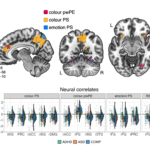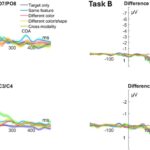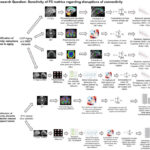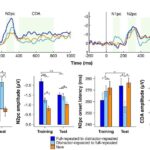A latest publication by Artyom, Stephanie, Lingyue et al. on Neuropsychologia on the topic on TMS modulates Ternus apparent motion.
Abstract
It is unclear how the brain reaches the correct balance between temporal and spatial processing necessary to perceive motion across space. Here, we tested whether visual motion area V5/MT+ plays a causal role in Ternus illusion. Ternus displays can be perceived as showing either group motion or element motion and are empirically useful for dissociating temporal and spatial grouping across visual fields. Online single-pulse TMS was applied to observers during the presentation of Ternus displays, either within or across hemifields, over left V5/MT+ or, respectively, a control site in the left somatosensory cortex, or an additional ‘Sham’ control condition. In the cross-hemifields condition, observers perceived more element motion with TMS over left V5/MT+ than in either control condition. By contrast, in the within-hemifield condition, observers reported more group motion after left V5/MT+ TMS. Our findings demonstrate a causal role of left V5/MT+ in the spatio-temporal grouping of Ternus apparent motion, and in maintaining the balance of spatio-temporal processing both within and across individual hemifields.
https://www.sciencedirect.com/science/article/abs/pii/S0028393221002487
Zinchenko, A., Brunner, S., Chen, L., Shi, Z., Taylor, P. C. J., & Müller, H. J. (2021). V5/MT+ modulates spatio-temporal integration differently across and within hemifields: causal evidence from TMS. Neuropsychologia, 107995. https://doi.org/10.1016/j.neuropsychologia.2021.107995





